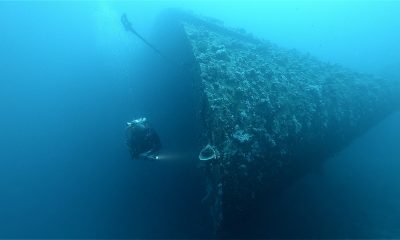News
12 steps to being an eco diver

For most divers, I think we feel pretty privileged to get to see and enjoy the amazing underwater world. As the plight of our oceans and coral reefs becomes more prominent in the news and on social media, often divers find ourselves probably a bit more aware of the value of the life beneath the waves and the issues affecting it. Therefore, it can be quite distressing when we learn that not all of the negative impacts on coral reefs are from large scale human impacts like climate change and overfishing, but that in some areas, lots of damage comes directly from divers and diving tourism, particularly in those areas that experience a high density of divers year round.
So, how do we divers, who love our sport and the underwater world, overcome the negative impacts and turn our actions into positives?
Here’s a list of 12 easy things we can do to minimise our impact:
1. Be choosy about your dive centre
There are lots of dive centres out there going above and beyond to be green, teaching and supporting good dive practices and minimise their environmental impact. A little research before hand and you can find centres that give marine biology talks, do beach cleans and work on an environmentally-friendly basis. Generally I find I have a better time and get more from holidays like this. The Green Fins website is pretty helpful.
2. Buoyancy

Buoyancy is massively important for both enjoying the dive, improving air consumption and also not trashing the environment you are diving in. Practice makes perfect, so you are never too good to try and improve; skills get rusty after a break even for experienced divers. There are lots of places offering courses specifically designed to improve buoyancy, so it’s a great excuse for more diving!
3. Do not touch anything
There may be an odd occasion you need to hold onto a rock if you’ve just run into a strong current or use a finger to stabilise yourself for a moment in an emergency. If you can pick a bit of rock without growth or a bit of dead coral to hold onto, this is best.
However if you are regularly holding onto stuff or bouncing off the bottom, then it’s time to go back to basics and get your buoyancy under control. If not for the sake of the environment, but yourself, particularly when you realise you just grabbed hold of a stonefish…
4. Reef safe sun screen

On a tropical dive holiday, chances are you will be using sunscreen to avoid sunburn and the associated health risks and pain that come with it. Many sunscreens contain oxybenzone, which is very bad news for reefs, as it kills coral. Since we know we will be in the water and some of the sunscreen will be washed off, by using a reef safe sunscreen, we ensure our diving activity doesn’t pollute the water for the corals we are there to see! For a list of Reef Safe Sunscreens click here! You could even forego the sunscreen entirely and wear a sun hat and UV-protective clothing instead.
5. Reusable water bottle
Keeping hydrated is a must in diving as hydrated divers are less likely to get the bends or suffer heat related issues in hot climates. By using a reusable water bottle, you can reduce the amount of single-use plastic entering the environment. Having your dive centre refill your own bottle it also often works our cheaper than buying bottled water from the shops.
6. Do not tip bad guiding
If your dive guide moved that frogfish/seahorse for you to get a photo, ask them not to touch or move anything. A photo is never worth killing something by stressing it out. If they guided you deeper than the original dive plan to show you something, or deeper than you are qualified/ comfortable going, ask to stick to the dive plan next time. Plan the dive, dive the plan. Ultimately you are responsible for your dive and your safety. Guides do what they think will make customers happy because happy divers tip. If your guide is acting like a cowboy, it’s probably because previous divers have rewarded this behaviour.
7. If you are a photographer, remember your surroundings
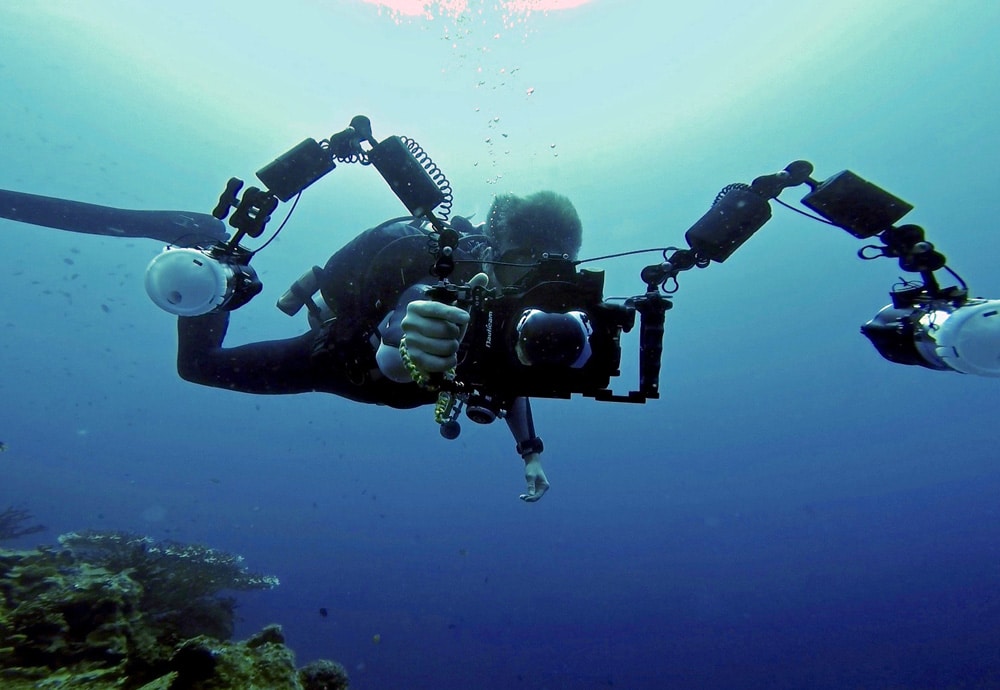
Never move anything, try not to touch coral or lie on the bottom. If you need to hold onto something to get your photo, then it’s back to work on your buoyancy before going in the water with a camera! Often taking a few well planned shots is best. Many creatures, such as seahorses are sensitive to light, so taking a few good photos and moving on ensures they are not permanently blinded by multiple strobe flashes. Also spare a thought for others in the dive group, by sharing the view of a nice critter, it reduces the likelihood of lots of divers crowding one spot and inevitably someone kicking something, causing damage and kicking up sand and silt.
8. Use spit, rather than washing up liquid or shampoo

There are a few biodegradable defog options out there for anyone who’s spit is not very effective at keeping their mask fog free, but for the majority of people spit works really well! It’s free, it doesn’t need time to break down to do no harm to the environment and you always have it with you!
9. Get involved in reef surveys or clean-ups
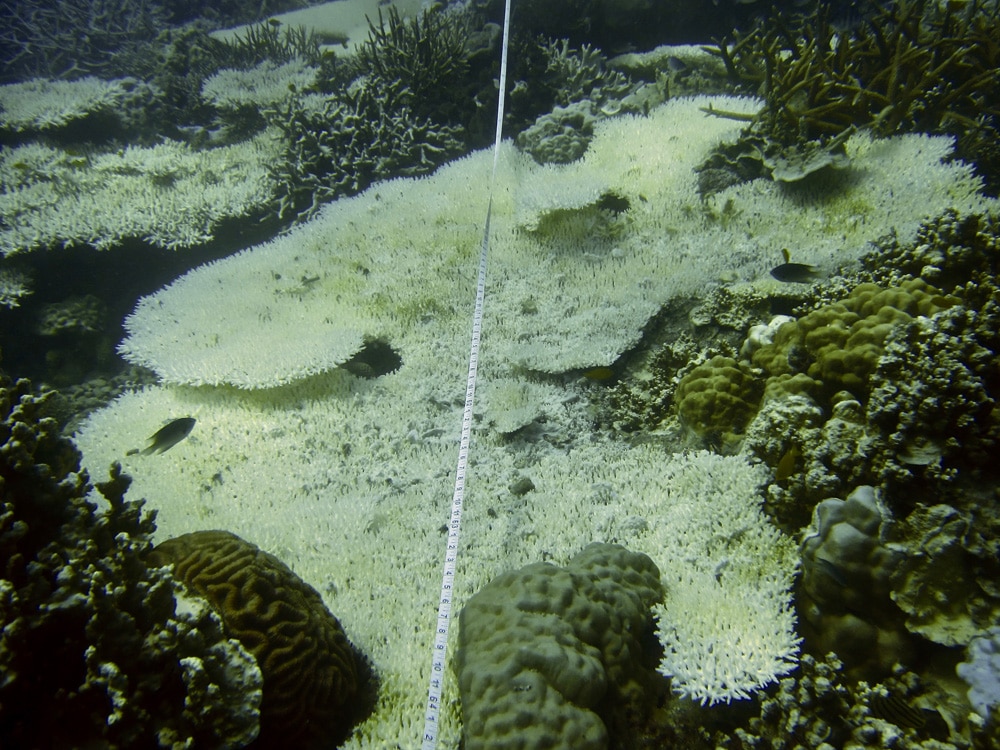
One of the absolute best ways to be sure you are having a positive impact is to give up some of your time to help clean up an area. Many dive centres and organisations will very gladly accept your help on a local beach clean or dive clean up. If you know your fish and coral you can also help by taking part in reef surveys, such as Seasearch, REEF, Reef Check or Coral Watch. Many eco dive centres teach these courses if you would like to hone your underwater ID skills and help gather data for science and conservation.
10. Think about your impact on land
Even though many of us wish we could live underwater sometimes, we do spend the majority of time on land and here we can make a huge difference that will help all environments and our oceans. We can reduce our dependence on single – use plastics that may end up in the ocean, by using reusable water bottles, coffee cups, straws and bags made from recyclable plastics or even better, alternatives like bamboo. Also, have a think about where you stay when on dive holidays, does the hotel try to avoid single use plastics? Do they recycle? What happens to the waste water? Again, with a little research good, affordable eco options can be found for accommodation. It’s always good to know you won’t be diving in water that your waste is going into!
11. Support initiatives to clean up the oceans
There are many great organisations out there attempting to make a difference. We can join charities like Marine Conservation Society, or buy products from clean up programmes. Fourth Element have a new swimwear range made from ghost netting and there are some very good looking flip flops made from recycled ocean plastics. New things are coming on the market all the time, they look good and are a great example of reusing and recycling. Have a search for what is going on near you and how you can support the movement.
12. Try not to eat the seafood you have just been diving with! (The invasive Caribbean lionfish aside).
If you were wondering why there weren’t as many fish as the last time you dived here, and you then go and order a reef fish for lunch at the hotel…you may have found your answer! For a guide on what is sustainable on most menu’s and what to avoid click here. For recipes for cooking the delicious and invasive Caribbean Lionfish, click here!
Blogs
TRAVEL BLOG: Jeff Goodman Dives SOMABAY, Part 2
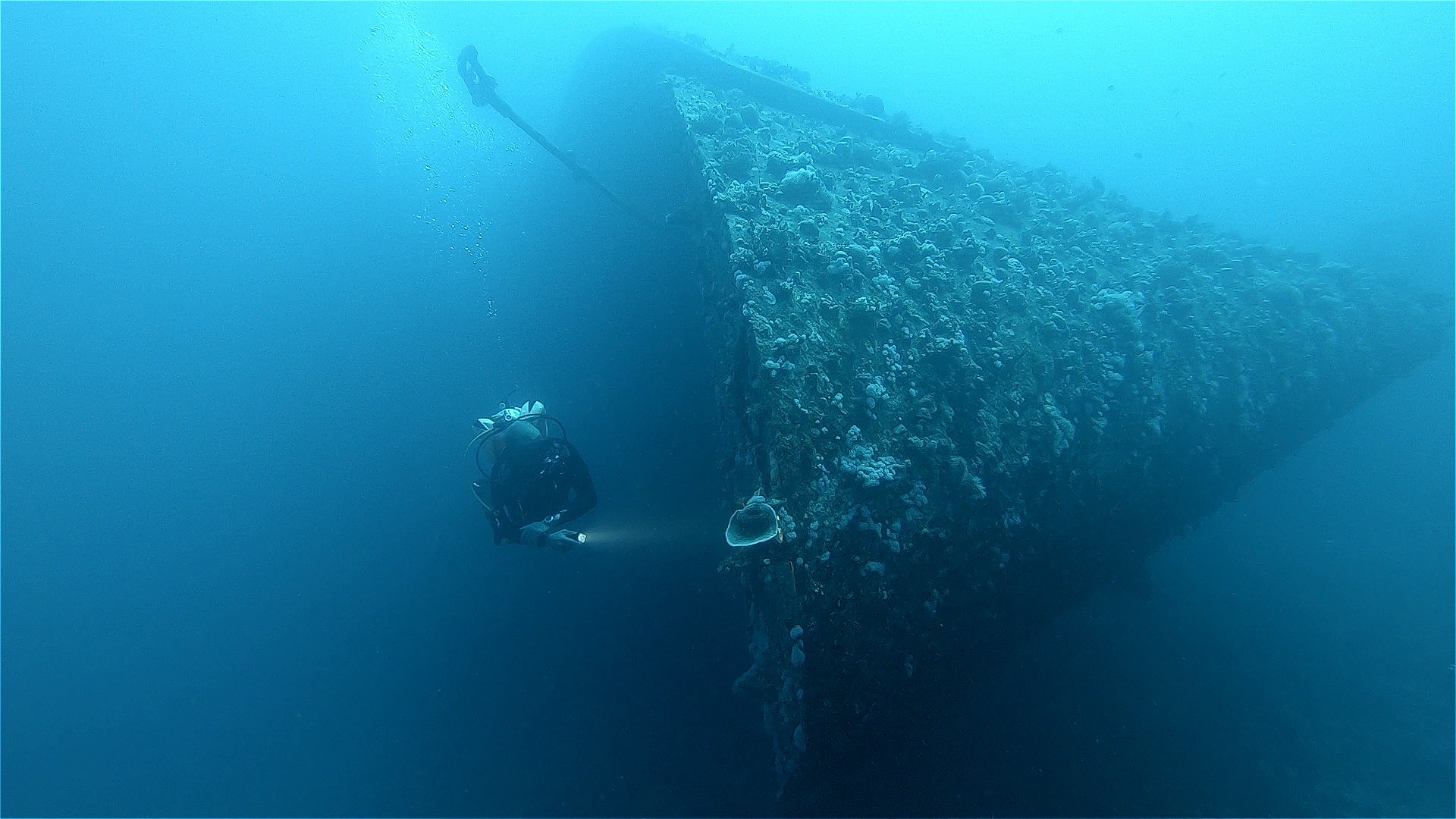
Day three of my trip to Somabay and we were spending the day on the Lady Christina and diving on the wreck of the Salem Express.
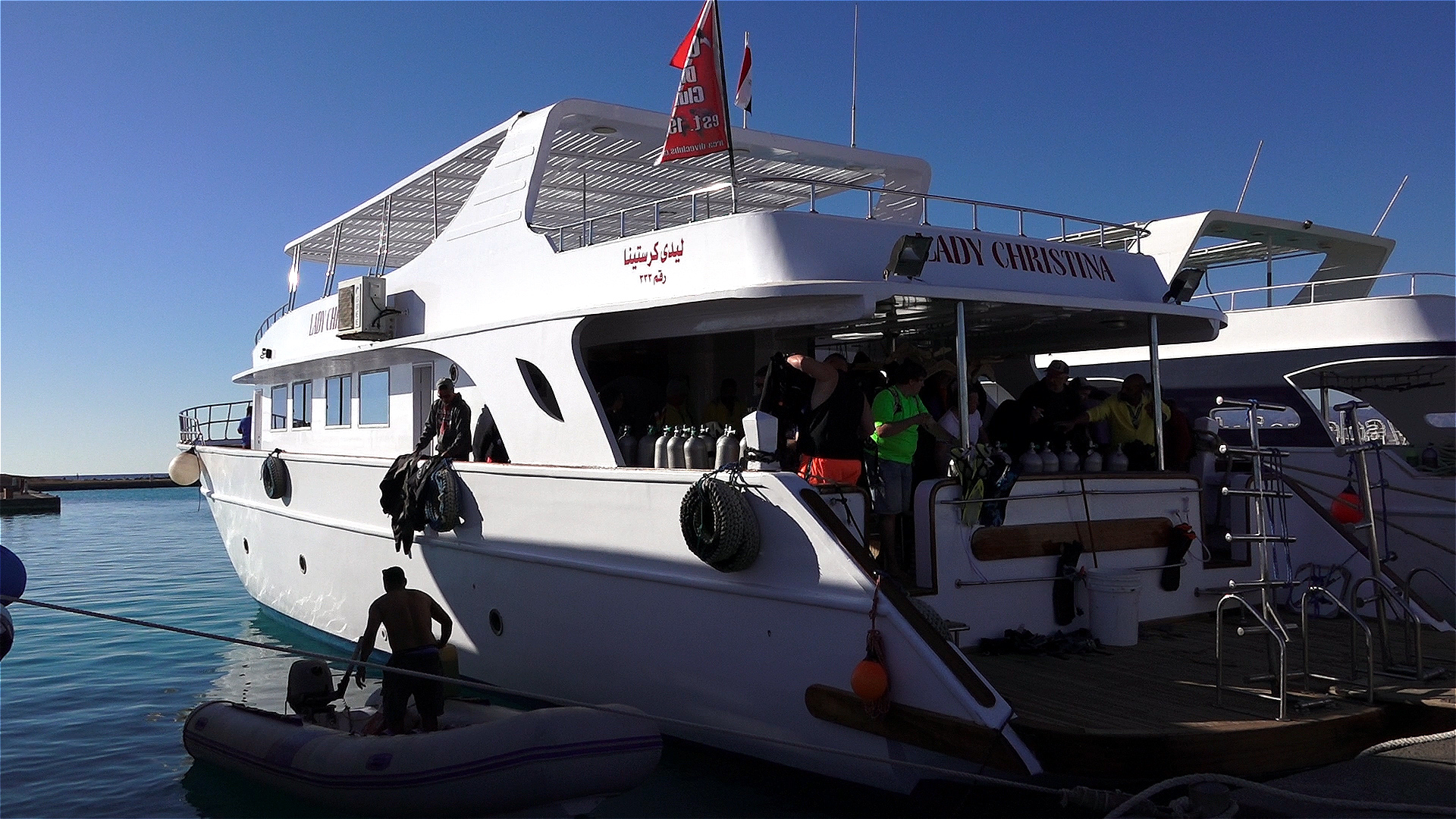
Diving wrecks for me is always one of mixed emotions. The excitement of diving a wreck is more than often tempered by the thought of loss of life when she sank. The Salem Express was a passenger ship and a roll-on/roll-off ferry travelling from Jeddah, Saudi Arabia to Safaga, Egypt. Most passengers were of poor class travelling home from their holidays while around 150 people were returning home from their pilgrimage to Mecca.

The ship struck a reef and sank within 20 minutes. Passengers were trapped below deck and the ship was filled with fear and panic.
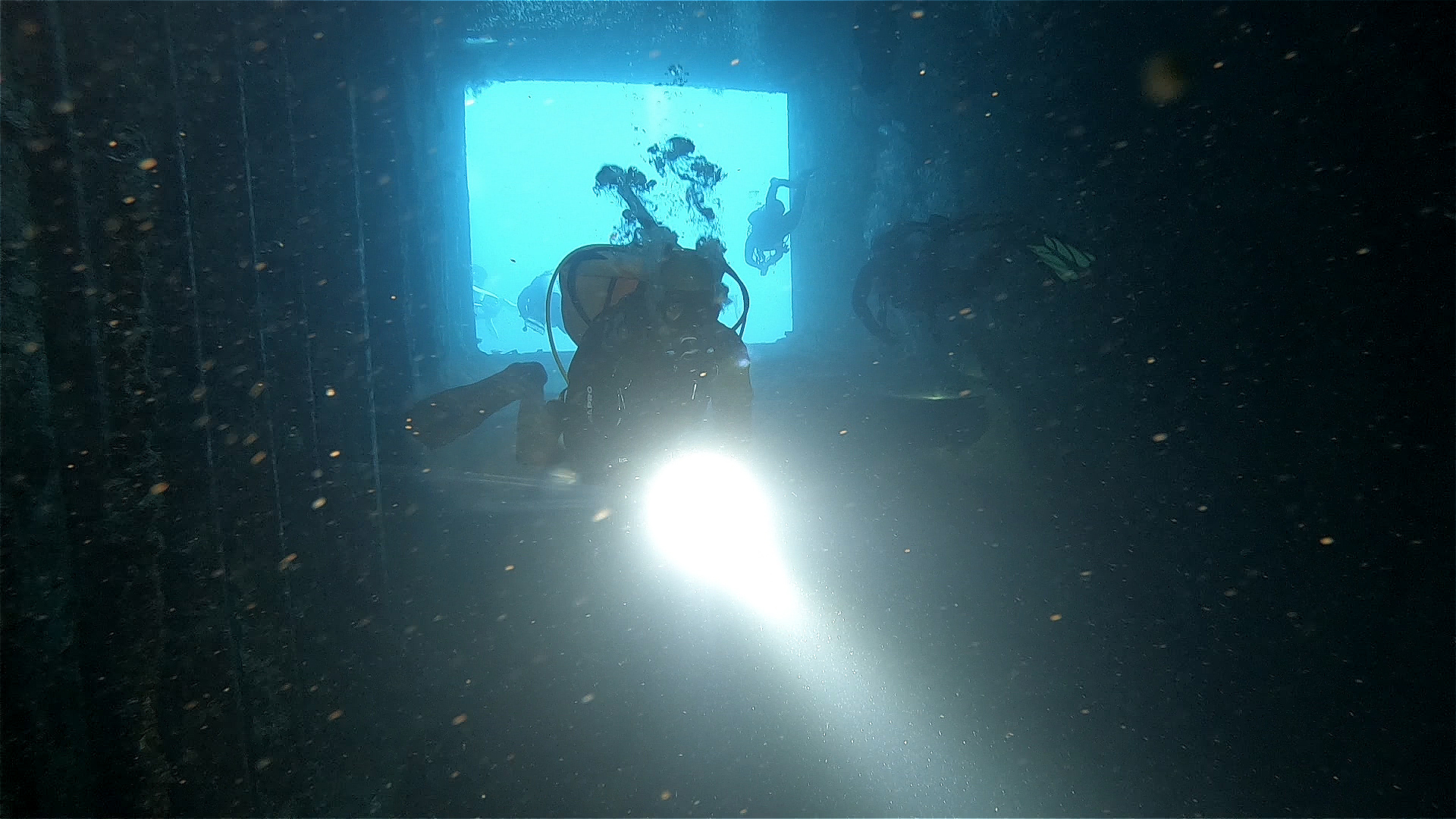
The wreck area is strewn with personal belongings from the crew and passengers such as a transistor radio and a flat iron for clothes. A diver at sometime has put them in a prominent place to be seen.

Tragically only one life boat was launched while the others went down with the ship. More than 600 men, women and children lost their lives here.
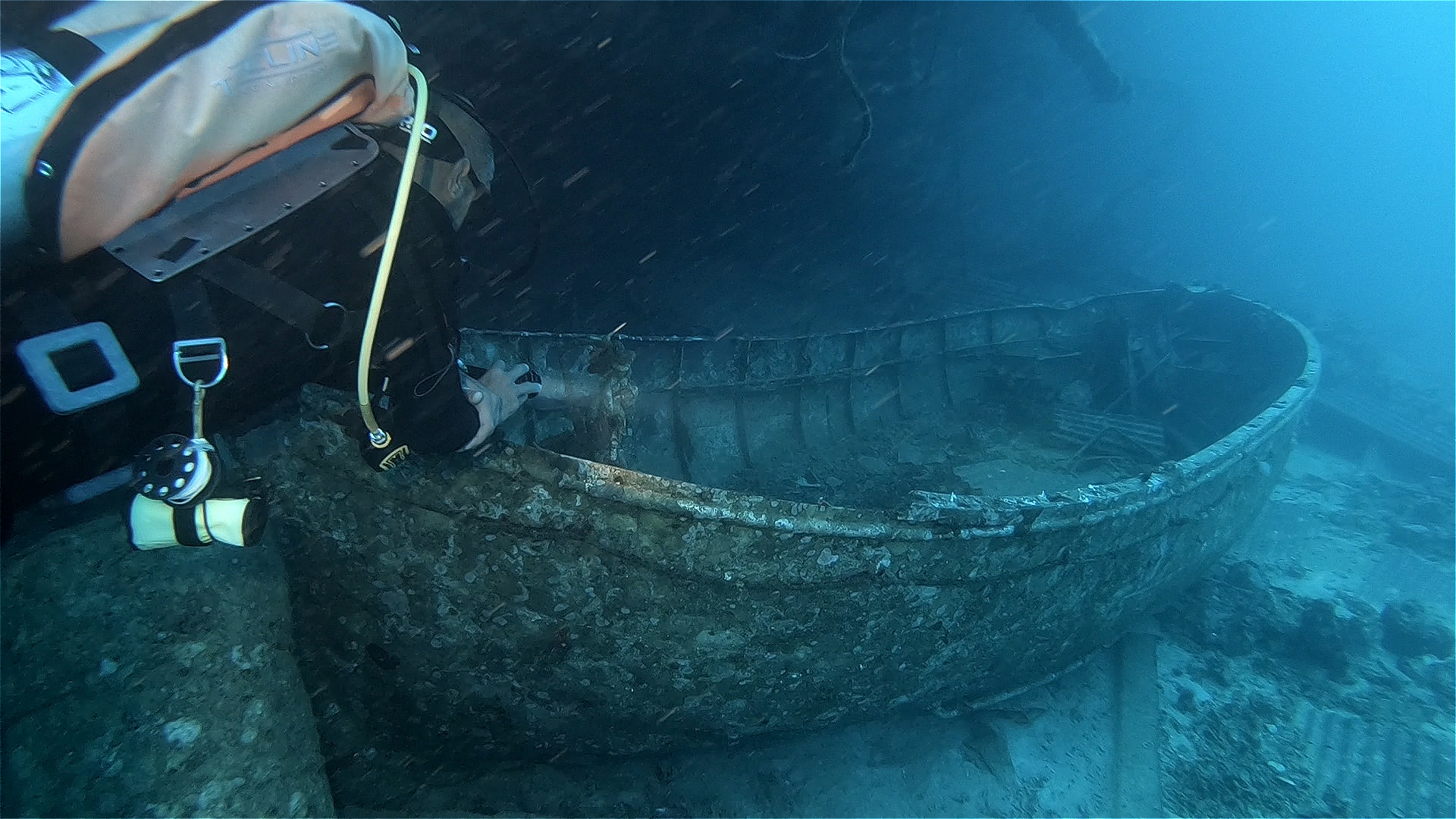
It’s a stark reminder that the sea can be unforgiving and so when we dive on such wrecks we should do so with humble regard.
Returning to the surface, shoals of fish are gathered under our boat and seem to be welcoming us back into the light.
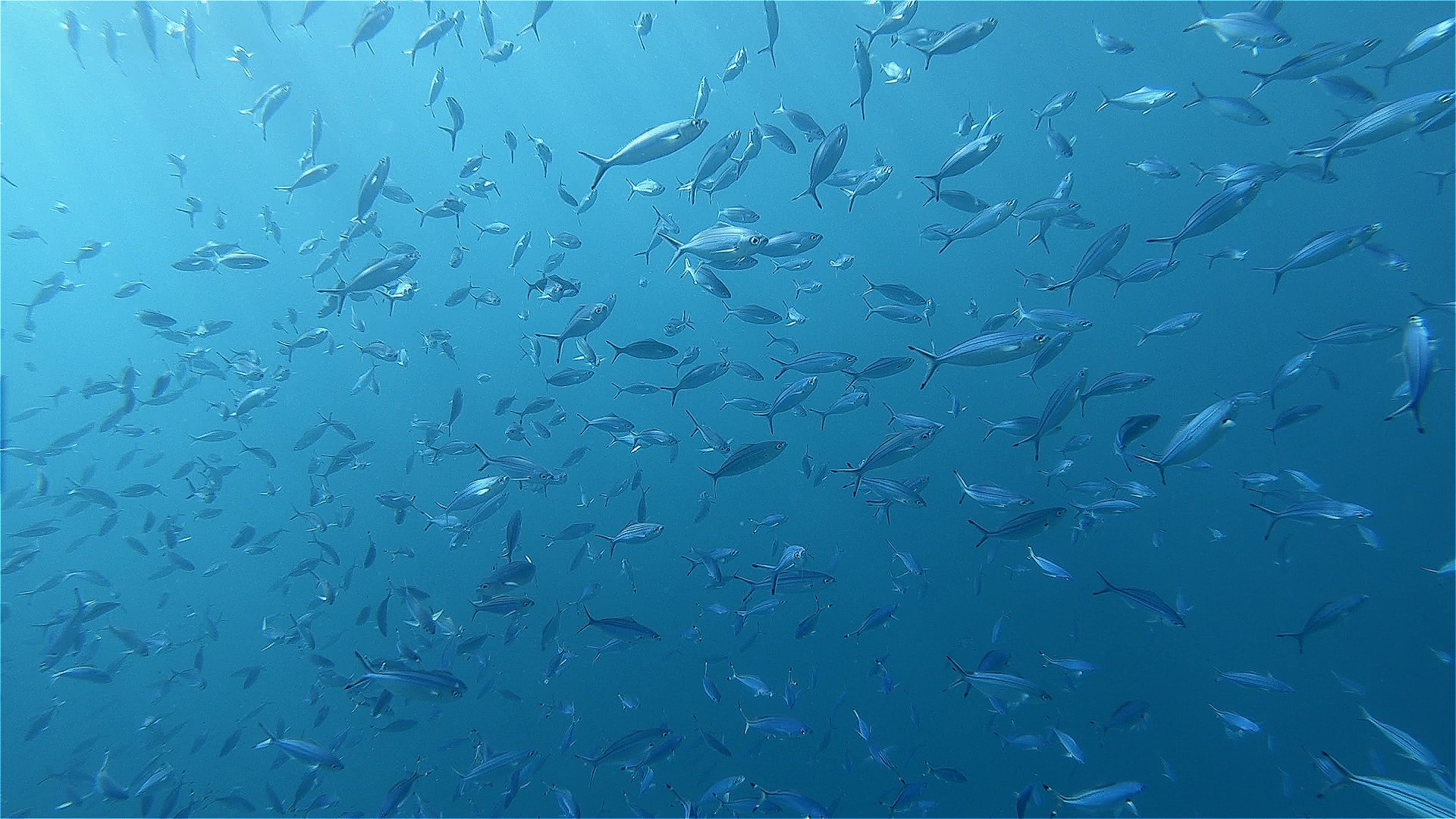
Back at the Breakers I sat in the dining area with a beer and a very good meal while my thoughts still remained with the day’s dive on the Salem Express.
Check in for part 3 tomorrow for Jeff’s last day of diving with Somabay on the off-shore reefs looking for turtles.
Book your next Red Sea dive adventure with SOMABAY! For more information, visit www.somabay.com.
Stay at the Breakers Diving & Surfing Lodge when you visit! For more information, visit www.thebreakers-somabay.com.
Find out more about ORCA Dive Clubs at SOMABAY at www.orca-diveclubs.com/en/soma-bay-en.
Blogs
TRAVEL BLOG: Jeff Goodman Dives SOMABAY, Part 1
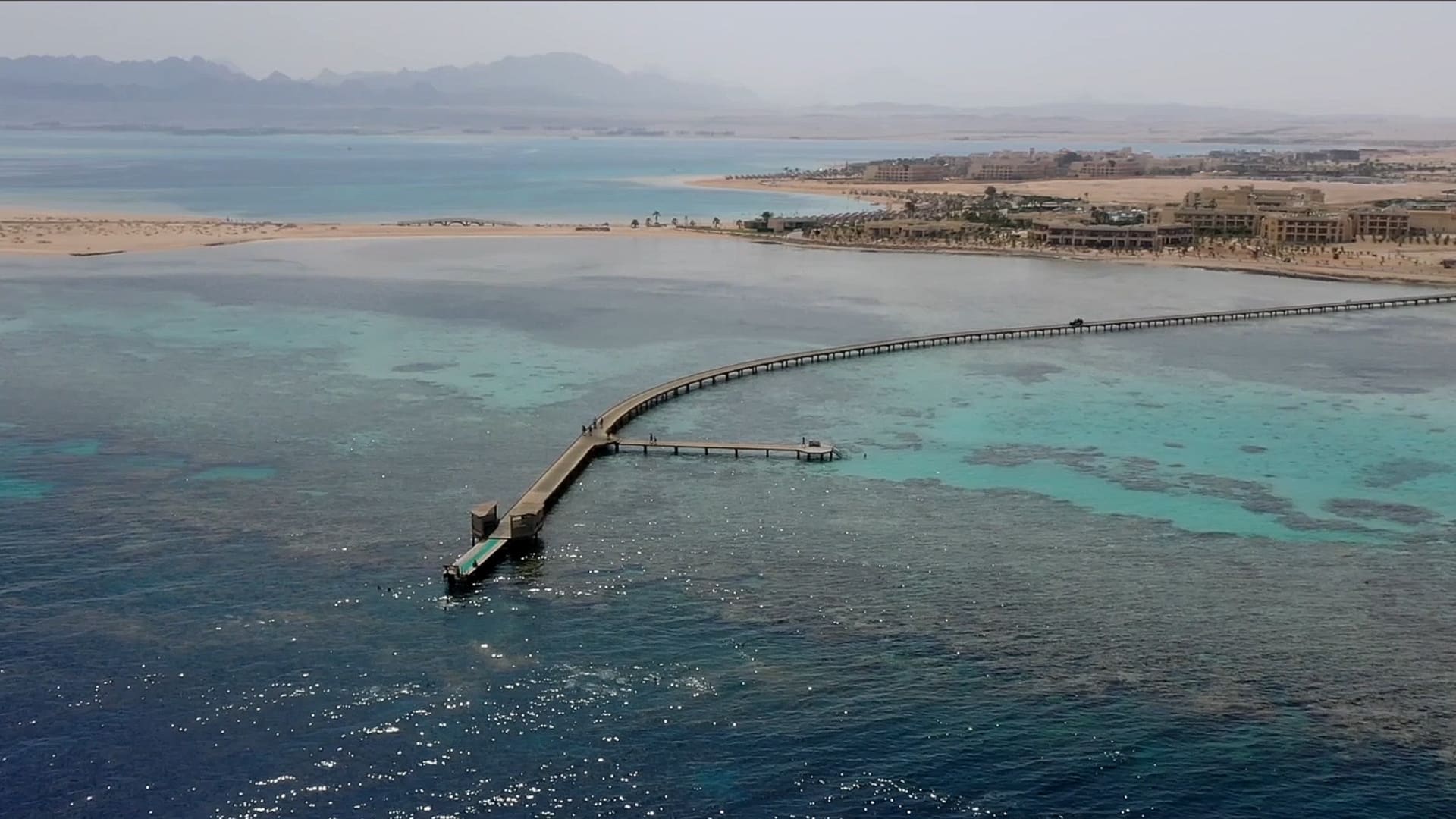
For a week at the end of February I was invited to sample the diving with Orca Dive Club based at the Breakers Diving and Surfing Lodge by courtesy of SOMABAY.
Somabay covers an entire peninsula and is home to several resorts as well as residential compounds. Somabay caters for scuba diving as well as many other sports, including windsurfing, golf, sailing, go-carting, horse riding and many other activities.
All the activities are of a world-class standard and any or all of these can be booked directly from The Breakers.

I took Easyjet from Bristol (UK) to Hurghada. Easyjet are not by any means my favourite airline but the flight was cheap and direct (except for the surprise extra £48 I was charged at the gate for my carry-on bag).
I was met at Hurghada airport by a driver and car and taken to the Breakers 28 miles (45Kilomaters) south along the coast. Once at the hotel I was too late for an evening meal and so a basic meal was delivered to my room. That and a beer from the fridge and I was fast asleep.
Early the next morning after breakfast I arrived for my rep meeting at the Orca Dive Center for 8.00am. I was immediately made to feel welcome, and after brief introductions I got some dive gear from the store, had a chat with my dive guide Mohamed and got ready to try the house reef situated at the end of a very long wooded pier where all diving gear and divers are taken out by buggies.
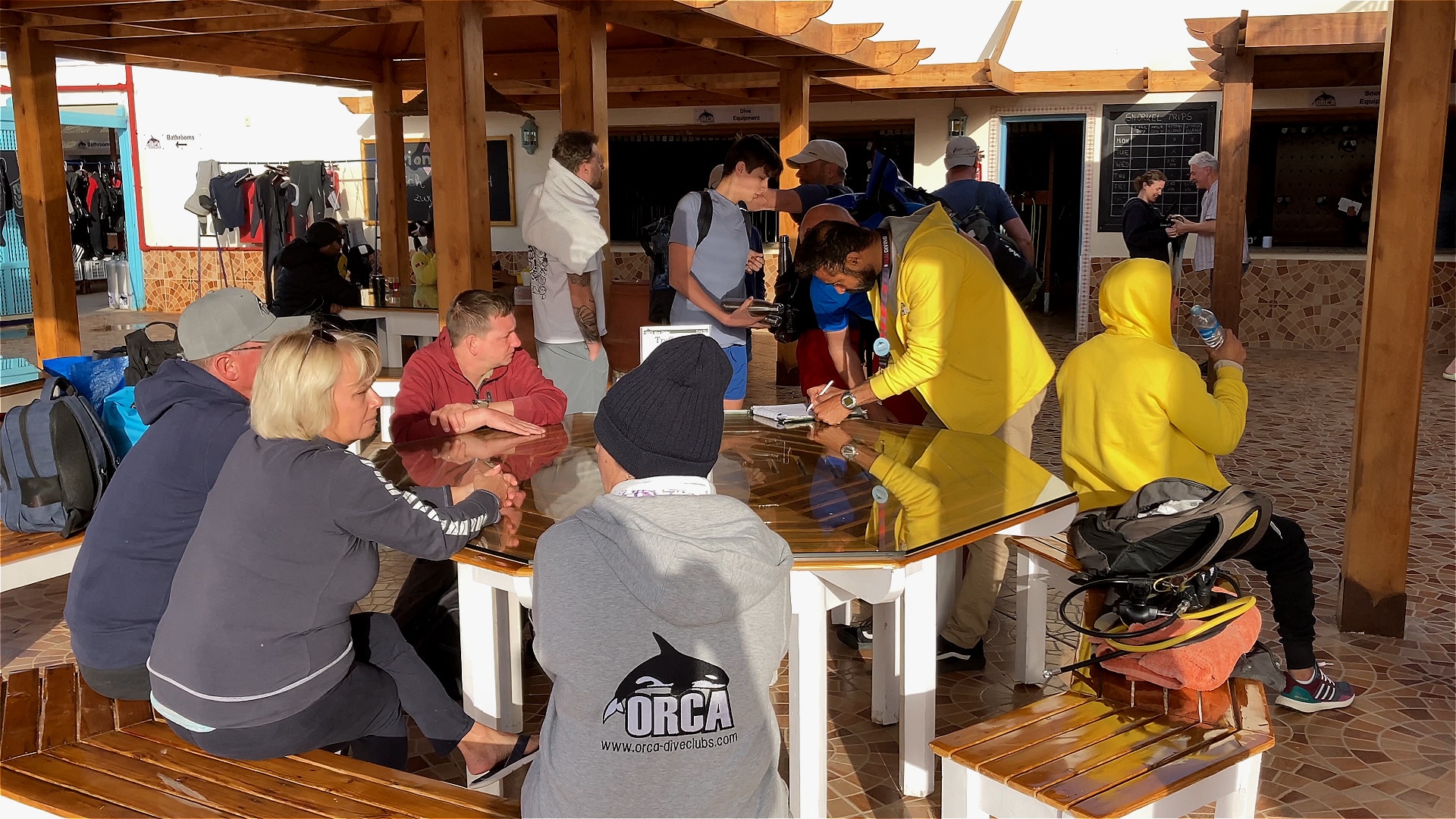
Once at the end of the pier, a helping hand from staff makes sure your gear is set and then it’s a short walk to the very end where you can either climb down a ladder of simply jump in the water next to the reef. The house reef extends both north and south giving a very easy and safe dive with plenty to see. At this time of the year the water temperature was a constant 22 degrees Centigrade and there was little or no current, so there were no issues in swimming back to the pier.
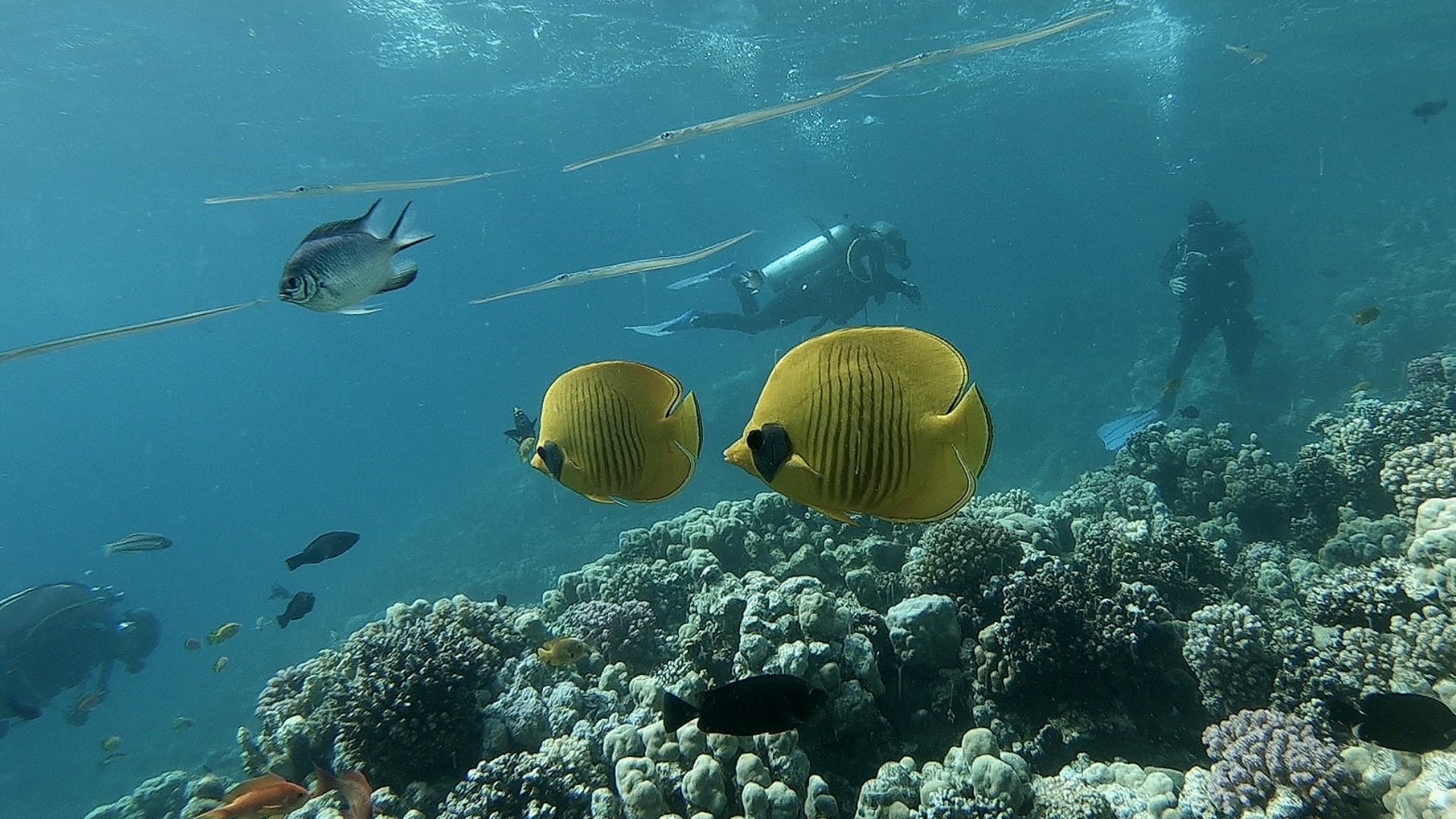
Quite a few divers were in dry or semi-dry suits, but being from the UK and used to the cold I found a 3mm wetsuit with a 3mm neoprene vest quite comfortable. Even after 50 years of diving I still find that first dive of a trip slightly nerving until I am actually underwater and then all becomes relaxed and I ease into auto diving mode. There was plenty to see with many of the Red Sea favourites along the way.
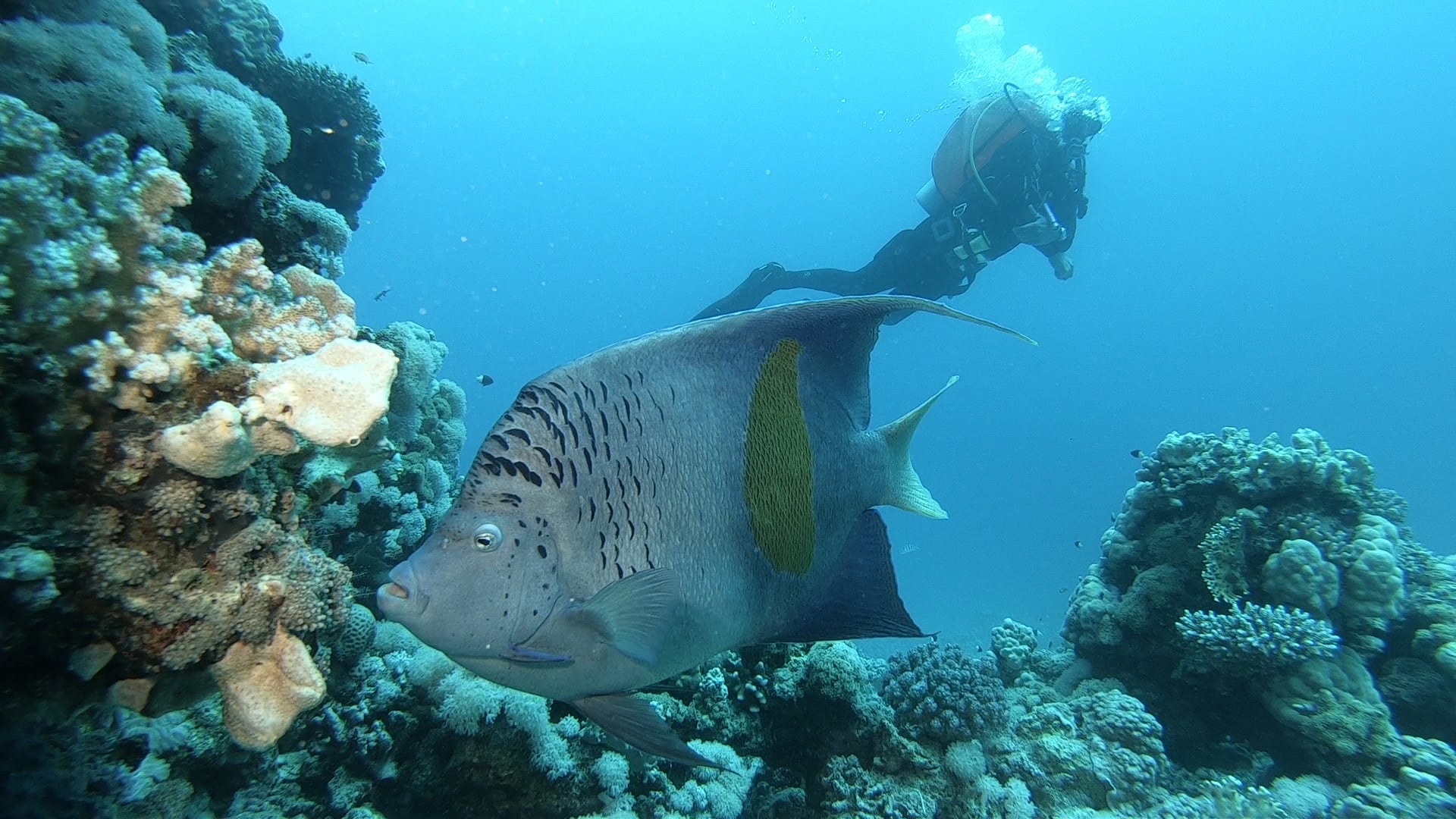
After the dive and a buggy ride back to the hotel for a very good buffet lunch I was back in the water, once again on the house reef for an afternoon dive.

Check in for part 2 tomorrow when Jeff gets on a day boat and dives a few of the off-shore reefs.
Book your next Red Sea dive adventure with SOMABAY! For more information, visit www.somabay.com.
Stay at the Breakers Diving & Surfing Lodge when you visit! For more information, visit www.thebreakers-somabay.com.
Find out more about ORCA Dive Clubs at SOMABAY at www.orca-diveclubs.com/en/soma-bay-en.
-

 News3 months ago
News3 months agoHone your underwater photography skills with Alphamarine Photography at Red Sea Diving Safari in March
-

 News2 months ago
News2 months agoCapturing Critters in Lembeh Underwater Photography Workshop 2024: Event Roundup
-

 Marine Life & Conservation Blogs2 months ago
Marine Life & Conservation Blogs2 months agoCreature Feature: Swell Sharks
-

 Blogs1 month ago
Blogs1 month agoMurex Resorts: Passport to Paradise!
-

 Gear News3 months ago
Gear News3 months agoBare X-Mission Drysuit: Ideal for Both Technical and Recreational Divers
-

 Blogs2 months ago
Blogs2 months agoDiver Discovering Whale Skeletons Beneath Ice Judged World’s Best Underwater Photograph
-

 Gear Reviews2 months ago
Gear Reviews2 months agoGear Review: Oceanic+ Dive Housing for iPhone
-

 Blogs3 months ago
Blogs3 months agoThe Thrilling Encounter with Tiger Sharks at Beqa Lagoon’s ‘The Colosseum’ with Coral Coast Divers



